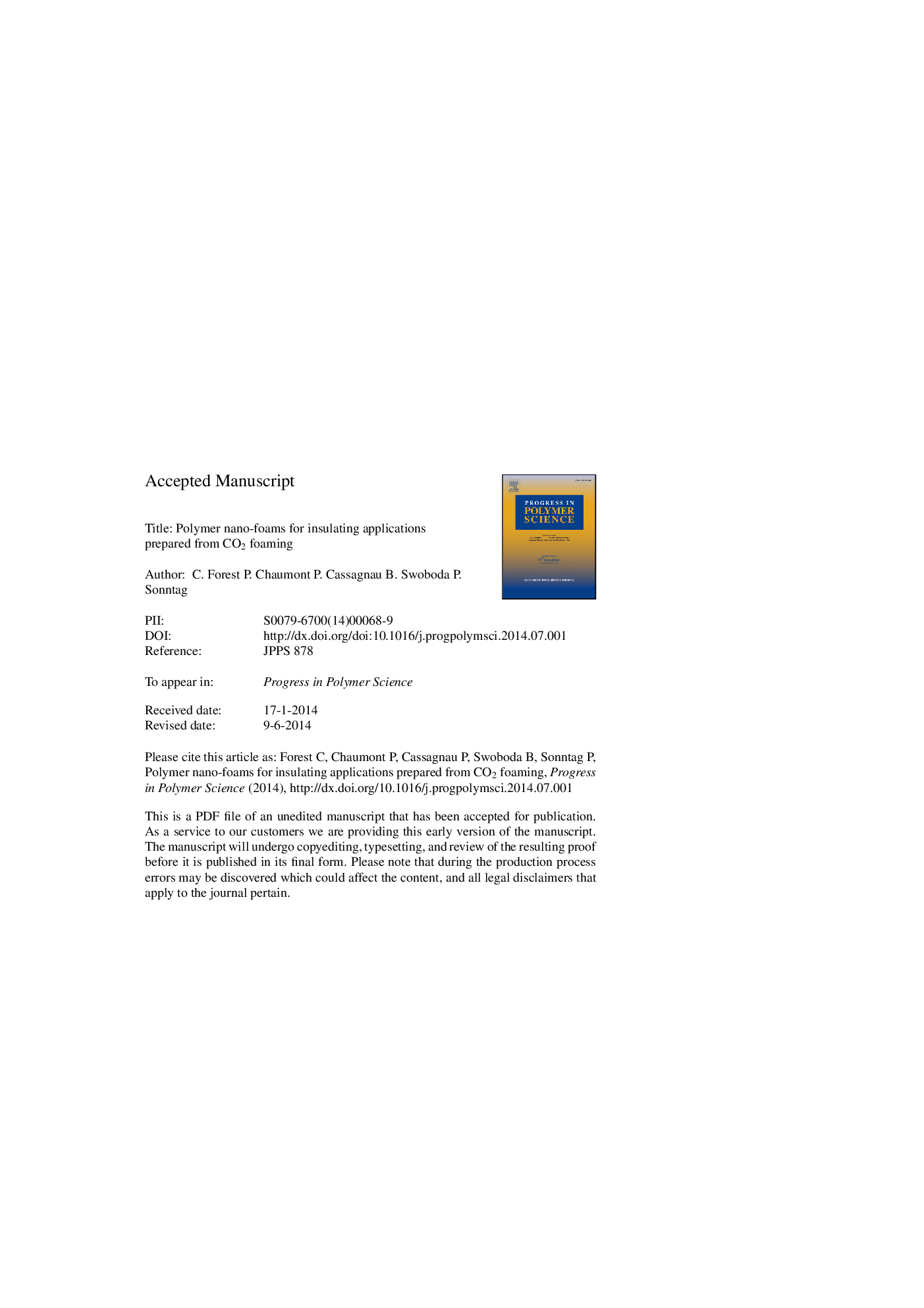| Article ID | Journal | Published Year | Pages | File Type |
|---|---|---|---|---|
| 5208051 | Progress in Polymer Science | 2015 | 50 Pages |
Abstract
Foaming processes with CO2 are reviewed from an experimental perspective. Two different CO2 processes are generally investigated: (1) a single-stage process where the nucleation is induced by pressure drop quenching after a saturation stage at 'high' temperature under supercritical conditions (foaming process by extrusion, for example) and (2) a two-stage batch process with pressure or thermal quenching to induce cell nucleation and growth after a saturation stage at 'low' temperature under gaseous/supercritical conditions. This review is mainly devoted to the former process. The current challenge in batch CO2 foaming consists in decreasing the foam densities while keeping cell size lower than 100Â nm. For that purpose nucleation must be preferred to increase the cell density up to 1015Â cmâ3. One way to increase the nucleation is to combine the effects of different nucleating agents to alter the heterogeneous nucleation phenomenon. The nano-structuration of polymers, via block copolymers or nano-fillers, offers a new and original way to fabricate nano-foams with a thermal conductivity lower than that of air. However, some challenges still need to be theoretically and experimentally investigated. On the other hand, if some goals can be met by samples obtained on the lab scale, the scale-up of this foaming process to the pilot and industrial scales is another exciting challenge.
Related Topics
Physical Sciences and Engineering
Chemistry
Organic Chemistry
Authors
C. Forest, P. Chaumont, P. Cassagnau, B. Swoboda, P. Sonntag,
